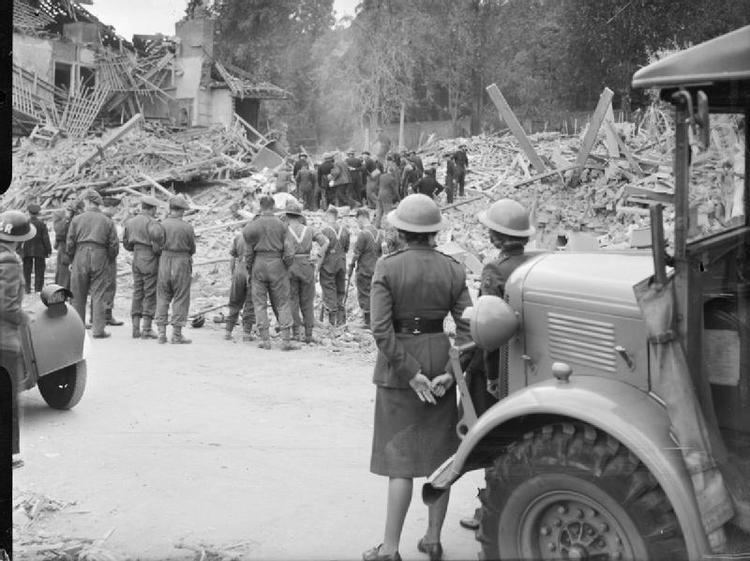 | ||
American Ambulance, Great Britain (AAGB) (sometimes referred to as the Anglo-American Ambulance Unit) was an humanitarian organisation founded in 1940 by a group of Americans living in London for the purpose of providing emergency vehicles and ambulance crews to the United Kingdom during World War II. The idea for the service came from Gilbert H. Carr during a meeting of the American Society shortly after the Dunkirk evacuation.
Contents
Funding came from private donations, both from Americans expatriates living in the United Kingdom and from the United States and the organisation was headed by Wallace B. Phillips (Joseph E. Kennedy, then United States Ambassador to the United Kingdom, was Honorary Chairman). Within six weeks of being set up £140,000 had been raised. By the end of 1940 the organisation had raised $856,000.
American Ambulance, Great Britain eventually operated a fleet of around 300 vehicles. During the course of the war, three members of the organisation were killed on active service. Two in London during the Blitz of 1940-1941 and one in Exeter.
Organisation
The American Ambulance, Great Britain, operated from 17 stations across mainland Britain with five located in London and one each in Cardiff, Cambridge, Birmingham, Bristol, Edinburgh, Glasgow, Leeds, Manchester, Newcastle, Nottingham, Reading and Tunbridge Wells.
Personnel
The ambulance staff were British women aged between 18 and 45 and numbered around 400, some of whom were seconded from the Mechanised Transport Corps (for Women) and the Women's Transport Services (FANY). Members of the AAGB wore the tunic and skirt uniform as worn by those in the FANY but with crossed British and American flags on the sleeve. All training was undertaken in Leeds.
Vehicles
All the AAGB's vehicles were painted grey with a red strip and an emblem featuring the British and American flags. Depending on the purpose several types of vehicle were operated by the AAGB.
Ambulances attended bombing incidents and transferred casualties to local hospitals and first aid posts. The vehicles were also used to transfer patients (often over great distance) requiring specialist treatment.
The AAGB's mobile first-aid post Ford Motor Company trucks were specially adapted to navigate along roads strewn with rubble and debris following an air raid. These units were able to treat several hundred casualties. These mobile units were accompanied by a truck carrying doctors, nurses and stretcher-bearers.
The AAGB also ran dedicated surgical trucks which were detailed to a local hospital. They attended at air raid incidents and were used to transfer patients to hospital.
Maintenance
The cost of maintaining the vehicles was met via subscriptions managed through the British War Relief Society of America.
